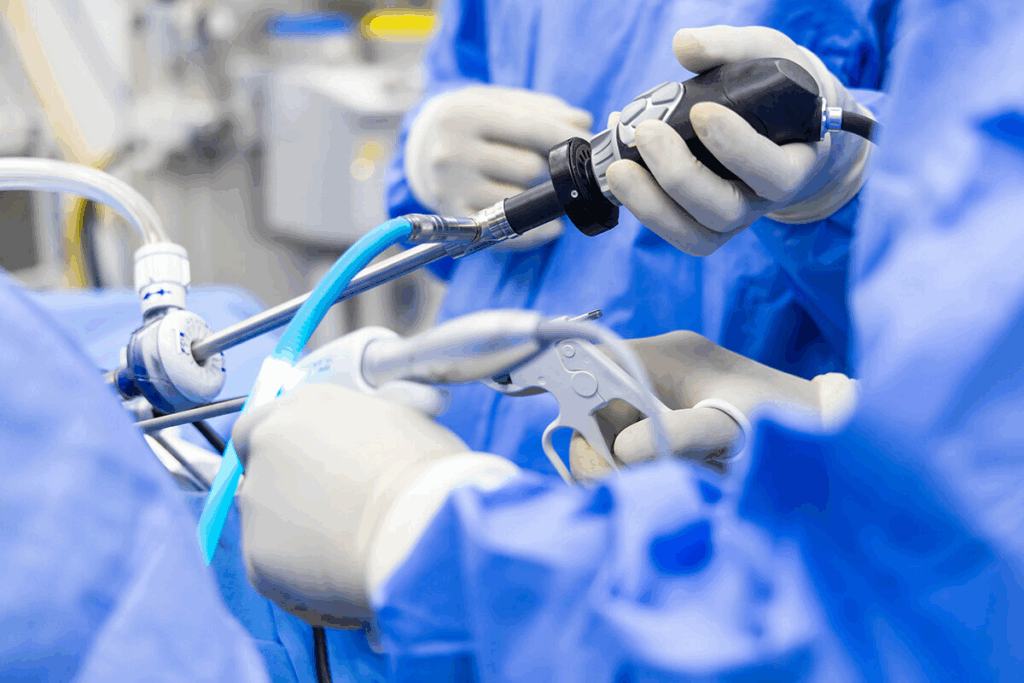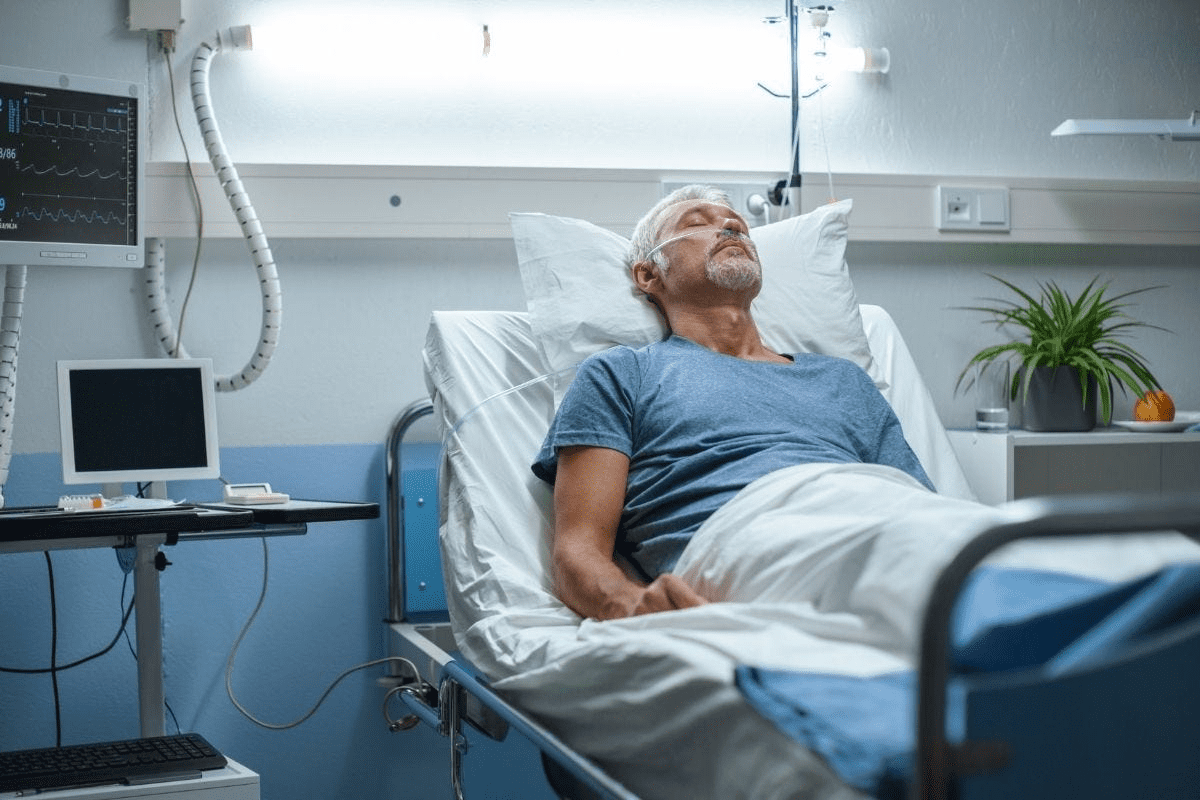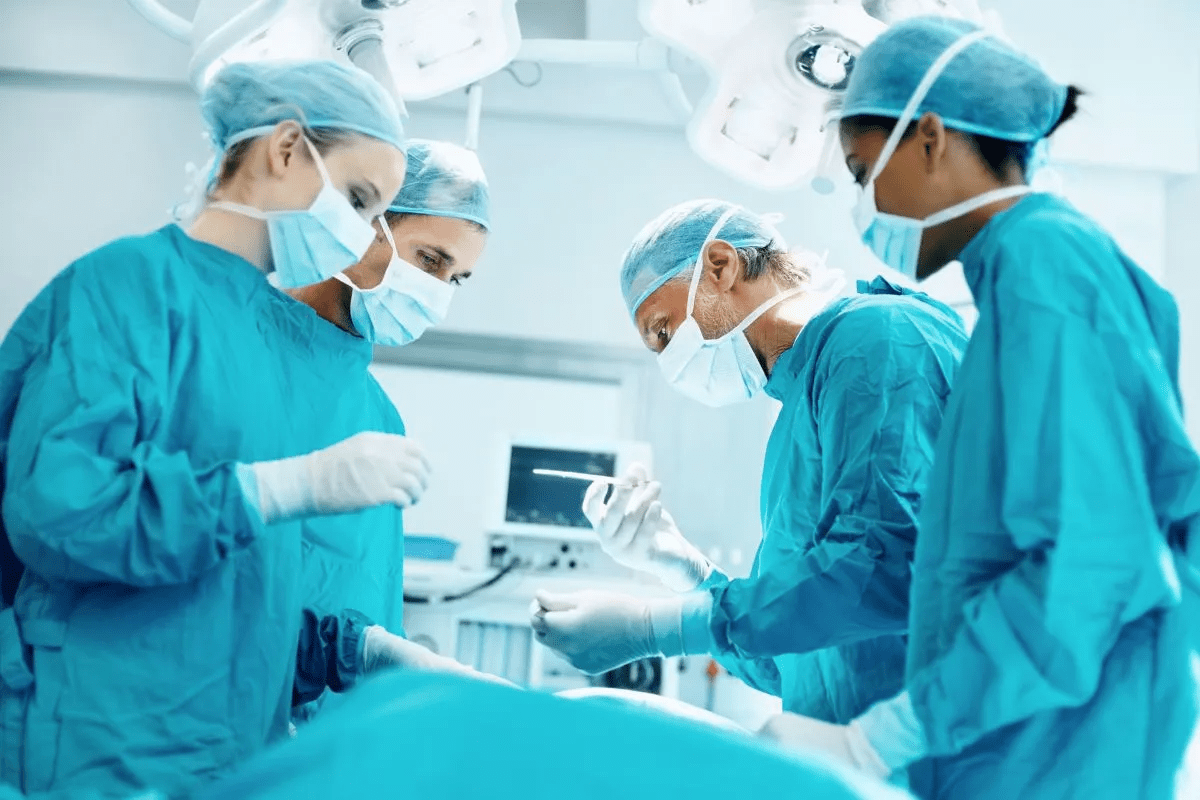Last Updated on October 31, 2025 by

Transurethral resection of the prostate, or TURP, is a surgery for bladder issues. At Liv Hospital, we focus on your care and follow the best medical practices. We help you through the prostate resection recovery with support and advice you can trust.
Knowing what to expect during recovery is key. Most people can get back to normal in 3 to 6 weeks. But, some might face issues like urine leaks, trouble getting an erection, or pain when urinating.
We’ll walk you through the recovery timeline. We’ll share tips on dealing with common symptoms. This way, you’ll be ready to face this journey with confidence.
A complete guide to TURP recovery, including essential post-operative care, managing the catheter, and symptom resolution.

For men with benign prostatic hyperplasia (BPH), TURP surgery is a top choice. It helps improve urine flow and life quality. The surgery removes part of the prostate gland that blocks urine.
Transurethral Resection of the Prostate, or TURP, treats BPH. It uses a thin, flexible tube with a camera and tools. This tube goes through the urethra to see and remove the blockage without cuts.
Men with BPH get TURP surgery when symptoms hurt their life quality. Reasons include:
TURP procedure can greatly improve urine flow and lower BPH risks.
TURP surgery is very successful. Most patients see better urine flow and less BPH symptoms. Studies show big symptom score drops and life quality boosts for many.
But, it’s key to talk about what to expect and risks with your doctor. This helps make a smart choice about TURP surgery.

Getting ready for TURP recovery can greatly improve your healing. It’s important to know what to do before surgery to make your recovery smooth. This includes understanding the steps to take for a successful recovery.
Your doctor will give you specific instructions before TURP surgery. These might include what medications to stop or keep taking, fasting rules, and other preparations. It’s key to follow these instructions closely to avoid complications.
Pre-surgery preparations typically involve:
Most TURP surgery patients stay in the hospital for just a day or overnight. Your healthcare team will watch over you after surgery. They will teach you how to care for your catheter and manage pain before you go home.
Aspect | Typical Expectation |
Hospital Stay Duration | Same day or overnight |
Post-Surgery Monitoring | Close monitoring of vital signs and overall condition |
Discharge Criteria | Stable condition, ability to manage catheter care, and pain control |
Having the right things at home can make your recovery easier. This includes comfy clothes, your medications, and catheter care supplies if needed. Having someone to help you, like a family member or friend, is also helpful during the early recovery days.
Essential items to have ready include:
By understanding and preparing for these aspects, you can ensure a more comfortable and successful TURP recovery. Always follow the specific guidance provided by your healthcare team. They can offer personalized advice based on your unique needs and condition.
The time right after TURP surgery is key for a good recovery. It’s important to listen to your healthcare team’s advice. This helps you heal smoothly and comfortably.
Rest is very important in the first 24-48 hours after surgery. Avoid hard work, lifting heavy things, and bending. Your healthcare provider will give you specific care instructions.
Key Activities to Avoid:
It’s important to take good care of your catheter after surgery. Keep it clean and dry. Follow your healthcare provider’s advice on how to care for and remove the catheter.
Catheter Care Tips:
Managing pain well is key after TURP surgery. Follow your healthcare provider’s advice on pain meds and other ways to feel better.
Pain Management Method | Description | Benefits |
Medication | Following the prescribed pain relief medication | Effective pain relief |
Rest | Adequate rest and relaxation | Reduces discomfort and promotes healing |
Hydration | Drinking plenty of fluids | Helps in flushing out the system and reducing pain |
By managing the first days after surgery well, you can improve your recovery. It’s important to talk often with your healthcare provider. They will give you the best advice for your recovery.
Recovering from TURP surgery varies for everyone. But, most follow a similar timeline. Knowing this helps patients plan better and recover smoothly.
The first week is key for healing. You might feel pain, need to pee a lot, and feel urgent. Rest well and follow your doctor’s advice closely.
It’s vital to manage pain and watch for any complications. Look out for heavy bleeding or trouble peeing.
Weeks 2-4 bring big improvements. Your pee flow gets better, and you pee less often. Start to move more slowly.
Eating right and drinking water helps your body heal.
By weeks 4-6, you can do more. You might go back to work or light exercise. But, avoid heavy lifting and hard activities.
Keep seeing your doctor to check on your healing and talk about any worries.
After 6 weeks, you’ll likely feel even better. Keep living healthy with a good diet and exercise. This helps your long-term health.
Recovery Phase | Typical Symptoms/Activities | Recommendations |
Week 1 | Discomfort, urinary frequency | Rest, follow post-operative care |
Weeks 2-4 | Improving urinary flow, decreasing frequency | Gradually increase physical activity, healthy diet |
Weeks 4-6 | Returning to normal activities | Avoid heavy lifting, follow-up with healthcare provider |
Beyond 6 Weeks | Continued improvement in urinary symptoms | Maintain healthy lifestyle |
“The key to a successful recovery from TURP surgery is understanding the process and following the recommended guidelines.”
A healthcare professional’s insight into TURP recovery.
Knowing the TURP recovery timeline helps patients. We’re here to support you every step of the way.
Managing symptoms after TURP surgery is key to a smooth recovery. It helps patients get back to their usual activities. We’ll guide you through common issues and how to tackle them.
Urinary problems like incontinence or weak flow are common after TURP. These symptoms usually get better as the area heals. Pelvic floor exercises, such as Kegel exercises, can help strengthen the muscles controlling urination, reducing incontinence.
Feeling a sudden urge to urinate or needing to go often is also common. Keeping a fluid intake diary helps manage your water intake. This avoids drinking too much at once.
Seeing blood in your urine after TURP surgery can be scary, but it’s not uncommon. At first, your urine might look pink or have blood clots. These usually clear up in a few weeks.
If you see heavy bleeding, clots, or if it lasts more than 4-6 weeks, call your doctor. To manage blood in urine, stay hydrated and avoid hard activities. Watching your urine’s color and consistency helps track your healing.
Discomfort and pain after TURP surgery vary. You might feel it in your lower abdomen, back, or perineal area. Over-the-counter pain medications, as advised by your doctor, can help.
Using warm compresses on your lower abdomen or perineal area can also help. Always follow your doctor’s advice on pain management to stay comfortable during recovery.
By understanding and managing these common symptoms, patients can improve their recovery. This makes it easier to get back to normal activities and enjoy a better quality of life.
Recovering from TURP surgery needs focus on nutrition and hydration. A balanced diet and enough water are key for healing.
Eating foods rich in nutrients helps a lot. We suggest eating:
Adding foods with antioxidants, like berries and leafy greens, is good. They help fight inflammation and aid healing.
Drinking water is important to remove bacteria and prevent infection. We recommend drinking 8-10 glasses of water a day. But, this can change based on your activity and needs.
Hydration Tips:
Some foods and drinks can irritate the bladder and urinary tract. It’s best to steer clear of:
Foods/Beverages | Reason to Avoid |
Spicy foods | Can irritate the bladder and urinary tract |
Caffeine | Can increase urinary frequency and urgency |
Alcohol | Can irritate the bladder and increase the risk of bleeding |
Carbonated drinks | Can cause discomfort and irritate the bladder |
By eating right and staying hydrated, patients can help their recovery. This can also reduce complications.
Recovering from TURP surgery means being careful with physical activity. This helps your body heal well. It’s key to know how to stay safe and active during recovery.
Right after TURP surgery, you should avoid some activities. Heavy lifting, bending, and hard work are off-limits for a few weeks. This helps your body heal and lowers the chance of problems like bleeding or infection.
Even with some activities off-limits, gentle exercises can help. They improve blood flow, lower clot risk, and aid healing.
Some safe exercises include:
As you get better, you can start doing more exercise. But listen to your body and don’t rush. Here’s what to do:
By following these tips and paying attention to your body, you can safely get back to your usual activities after TURP surgery.
TURP surgery is usually safe, but knowing about possible complications is important. It helps you understand your recovery better. Being informed can help you address any worries you might have.
After TURP surgery, you might face infections, bleeding, or urinary problems. Infection is a risk with any surgery, and your doctor might give you antibiotics. Bleeding can be minor or serious, and you might need more medical help.
Urinary problems like trouble urinating or incontinence can happen right after surgery. But, they usually get better in a few weeks. If these problems last, you should talk to your doctor.
Long-term issues, though rare, include urinary incontinence and erectile dysfunction. These problems can be tough, but there are treatments available.
Another long-term issue is urethral stricture, which can make urinating hard. Regular check-ups with your doctor can help catch and treat these problems early.
Knowing when to get help after TURP surgery is key. If you have severe pain, heavy bleeding, or fever, call your doctor right away. Also, if you see signs of infection like chills or a bad smell, get help fast.
Being aware of when to seek medical help can greatly improve your recovery. Keep an eye on your symptoms and talk openly with your healthcare team.
Understanding life after TURP surgery is key for patients to get back to normal. Most people see big improvements in their symptoms and life quality after the surgery.
Recovering from TURP surgery means following a few important steps. This guide helps patients look forward to a better life. They can manage symptoms, eat well, and start doing physical activities again.
After the surgery, many patients feel much better and less uncomfortable. It’s important for patients to stay informed and follow their doctor’s advice. With the right care, life after TURP surgery can be much more comfortable and enjoyable.
Recovery from TURP surgery can take 4-6 weeks to get back to normal activities. But, it may take months for full recovery and bladder control.
Recovery from prostate resection, or TURP, can take weeks to months. The first few weeks are the toughest, but you’ll see big improvements.
After TURP, you might face urinary issues like frequent need to pee or leakage. You could also feel some pain, but meds can help. Always follow your doctor’s post-op care advice.
You can start driving, walking, and light exercise in 2-4 weeks after TURP. But, avoid heavy lifting and bending for 4-6 weeks to heal right.
Symptoms like frequent pee, urgency, or leakage are common after TURP. Some might see blood in their pee, but it’s usually temporary. If symptoms are bad or last long, call your doctor.
Managing pain after TURP includes meds and rest. Your doctor will guide you on how to handle pain and discomfort during recovery.
Complications like bleeding, infection, incontinence, or erectile dysfunction are rare but possible. It’s good to know the risks and talk to your doctor about them.
Keeping your catheter clean and secure is key. Watch for infection or blockage signs. Your doctor will give you detailed care instructions.
Eat a balanced diet with fruits, veggies, and whole grains. Drink plenty of water. Avoid spicy, acidic, caffeinated, or alcoholic drinks to soothe your bladder.
Call your doctor if you have severe bleeding, pain, or trouble peeing. Also, seek help for infection signs like fever or chills.
Sivarajan, G., & Masterson, T. A. (2014). Ten-year Outcomes of Sexual Function After Radical Prostatectomy. European Urology, 66(2), 222-230. https://www.sciencedirect.com/science/article/abs/pii/S0302283813008476
Subscribe to our e-newsletter to stay informed about the latest innovations in the world of health and exclusive offers!